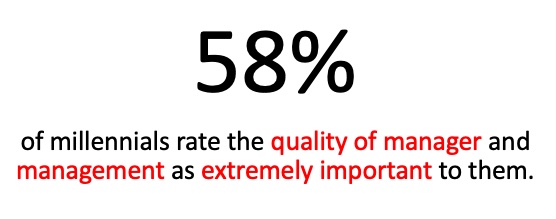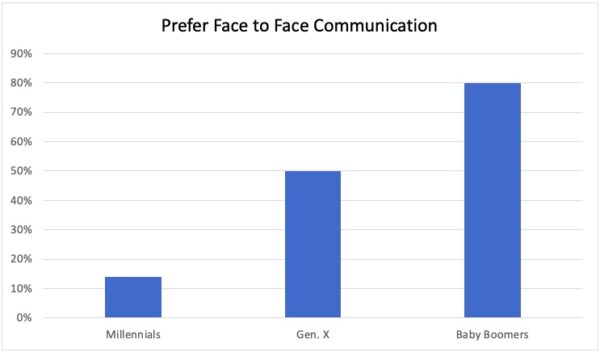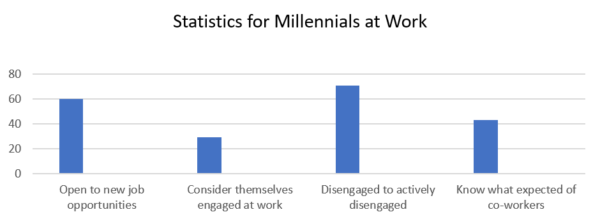Adaptive Leadership

The Appleton Greene Corporate Training Program (CTP) for Adaptive Leadership is provided by Dr. Wade Certified Learning Provider (CLP). Program Specifications: Monthly cost USD$2,500.00; Monthly Workshops 6 hours; Monthly Support 4 hours; Program Duration 12 months; Program orders subject to ongoing availability.

Personal Profile
Dr. Wade started his career serving 20 years in senior leadership positions with a focus on change management. He then excelled in the management consulting and leadership development industries for the past eight (8) years, first as an Executive Vice-President and then with his own leadership development company.
Dr. Wade been involved with leadership development, change management, and generational and cultural mega-trends and meta-narratives since the mid-90’s. He is a passionate leadership futurist and expert in adapting to generations, culture, and the future of leadership. As an expert at the forefront of the latest leadership development training, Dr. Wade’s subject matter and proven process will empower you and your organization to successfully develop the critical skills necessary to thrive in today’s leadership environment.
Dr. Wade has extensive experience training leaders in various sectors, from healthcare to technology to finance and more. This course, and the subsequent subject matter, will guide course participants through many of the pitfalls and struggles in the modern leadership environment and enable them to master adaptive solutions. Each participant will feel inspired and will have gained practical understanding and actionable steps in relation to adaptive leadership.
To request further information about Dr. Wade through Appleton Greene, please Click Here.
(CLP) Programs
Appleton Greene corporate training programs are all process-driven. They are used as vehicles to implement tangible business processes within clients’ organizations, together with training, support and facilitation during the use of these processes. Corporate training programs are therefore implemented over a sustainable period of time, that is to say, between 1 year (incorporating 12 monthly workshops), and 4 years (incorporating 48 monthly workshops). Your program information guide will specify how long each program takes to complete. Each monthly workshop takes 6 hours to implement and can be undertaken either on the client’s premises, an Appleton Greene serviced office, or online via the internet. This enables clients to implement each part of their business process, before moving onto the next stage of the program and enables employees to plan their study time around their current work commitments. The result is far greater program benefit, over a more sustainable period of time and a significantly improved return on investment.
Appleton Greene uses standard and bespoke corporate training programs as vessels to transfer business process improvement knowledge into the heart of our clients’ organizations. Each individual program focuses upon the implementation of a specific business process, which enables clients to easily quantify their return on investment. There are hundreds of established Appleton Greene corporate training products now available to clients within customer services, e-business, finance, globalization, human resources, information technology, legal, management, marketing and production. It does not matter whether a client’s employees are located within one office, or an unlimited number of international offices, we can still bring them together to learn and implement specific business processes collectively. Our approach to global localization enables us to provide clients with a truly international service with that all important personal touch. Appleton Greene corporate training programs can be provided virtually or locally and they are all unique in that they individually focus upon a specific business function. All (CLP) programs are implemented over a sustainable period of time, usually between 1-4 years, incorporating 12-48 monthly workshops and professional support is consistently provided during this time by qualified learning providers and where appropriate, by Accredited Consultants.
Executive summary
Adaptive Leadership
Perhaps the modern era can best be described by Bob Dylan’s song, “Times they are a-Changin’.”
The world and corresponding business environment are often described as VUCA which stands for volatile, uncertain, chaotic, and ambiguous. Emerging technologies like quantum computing, robotics, and artificial intelligence are defining the future of work. So is the millennial mindset and the rapid change of culture. The way that millennials and Gen. Z view work and employment has some very prominent differences in comparison to other generational cohorts. Along with these changing employment drivers is the fact that there are more millennials and Gen Z in the workforce than any other generation, and it becomes crystal clear that older tactics and paradigms of work and leadership are no longer effective. What is needed is adaptation. Ultimately, millennials, along with technology and cultural drivers, are driving workplace change and the need for adaptive leadership.
IBM
The International Business Machines Corporation (IBM) was founded in 1911 as the Computing-Tabulating-Recording Company (CTR). IBM was one of the vanguard companies in the early development of computing technology. The company came to prominence in the 1960’s with mainframe computing and reached its pinnacle in the 1980’s with the advent of personal computers.
The 1990’s were difficult years for IBM. The company faced financial struggles including a loss of more than $8 billion in 1993. The personal computer market got extremely competitive with the emergence of companies like Dell, Compaq, and HP that resulted in IBM’s market share plunging to 20% from 80%. Technology was evolving rapidly which required an agile and innovative environment to offer services and products to align with emerging trends… and IBM was anything but agile and innovative. And to top it off, culture and the generational workforce began shifting.
With all these threats facing IBM, the company was forced to adapt. They adapted their strategy, structure, and workforce solutions to meet with contemporary demands. IBM adapted and things began to change.
Today, IBM continues to adapt to the technological, cultural, and generational challenges. They have employed various strategies to engage a multi-generational workforce including mentorship programs, training and development opportunities, and open communication. IBM is now a global leader in hybrid cloud computing, artificial intelligence (AI), and consulting services. They understood and employed the power of adaptive leadership.
Common Case Story
Jane is 60 years old. She had a few good jobs after college before landing at her current company. She has been employed there for 31 years now. She loves the company and has invested a lot of her time and energy there. Jane rose through the ranks and is now a mid-level manager responsible for a team of 25 employees. Her team is diverse including generationally. Jane finds that she doesn’t know how to handle some of her older employees who complain about some of the younger employees… partly because she agrees with them. Furthermore, the tactics that work to motivate employees around her age do not work for millennials and Gen Z. This predicament frustrates Jane. She finds that younger employees often seem entitled, spoiled, and critical of some of the older team members. Jane has had several millennial workers just quit by not showing up for work. Jane can’t even fathom just quiet quitting. It is against everything she was raised to do and believe. She also notices that some of the younger generations are disengaged at work and doesn’t know how to motivate and inspire them.
In Jane’s conversation with some of her younger team members she hears them voice their frustrations as well. Many of them feel that some of the older team members are outdated, not in touch with the times, and unwilling to change or try something new. Most of them feel they are looked down upon, misunderstood, and told to keep their ideas to themselves.
Ultimately, Jane hears the frustration of both sides. She just doesn’t know how to adapt her leadership style to reach both sides and move toward being a cohesive, highly effective team.
Scenarios like this are played out every day in tens of thousands, if not hundreds of thousands, of organizations around the world.
Common Problems
The problems that leaders, managers, and human resource professionals face within their organizations today can be quite frustrating, especially considering the constant state of change.
IMAGE TOO BLURRY
Generational conflict, like in the case story, is prevalent like never before. When organizations and teams experience generational conflict, it destroys the potential and effectiveness of the organization or team. What is needed is understanding of generational differences through shaping factors and cultural trends. Understanding, coupled with empathy, will decrease generational conflict and enable disagreements to be resolved quickly. This course will enable course participants to gain clarity regarding other generations and worldviews and will greatly reduce generational conflict.
Communication is difficult. It is problematic for people who are similar. It is much more complicated when considering times of change and differences in generational communication styles and preferences. These differences often lead to misunderstanding, miscommunication, and even outright conflict. A major factor in the success or failure of an organization is its ability to develop healthy and effective communication skills. This course will offer solutions and develop the skills necessary to communicate effectively in today’s marketplace.
Ineffective management styles are one of the top contributors to the success or failure of the workforce especially in times of change. There have always been bad managers. In fact, it’s true that people don’t leave jobs, they leave bosses. Employees no longer tolerate being yelled at, inappropriately being micromanaged, or feeling dismissed by unempathetic managers. In fact, having quality managers matters more now than ever before. Poor leadership is a leading contributor to many of the problems companies face today. The trends are clear, leaders need to adapt to a new model for a new era. This course will give participants the tools necessary to be successful managers and leaders.

In times of change and stress, the absence of emotional intelligence destroys trust and deteriorates relationships. An individual’s emotional quotient is directly correlated to that person’s ability to succeed as a leader. Without an emotionally intelligent leader, a team will be less productive, void of trust, and experience higher turnover rates. The good news is that emotional intelligence can be learned. It is something that can be developed. In this course, participants will be encouraged to grow in their emotional quotient. They will learn about all the aspects of emotional intelligence and then write out specific action steps that will enable them to grow in their emotional intelligence.
Lack of engagement among millennials and Gen Z roughly impacts the U.S. economy with a staggering $285-470 billion a year loss due to non-productive employees. On a micro level, the lack of engagement is frustrating to managers and productive team members. Lack of engagement can cause companies to miss goals and productive employees to feel devalued. This course will help adaptive leaders to understand the reasons for lack of engagement and give them the tools to engage, motivate, and inspire their teams.
The problems with talent retention and talent attraction can be exasperating for HR professionals and their organizations. Gallup estimates that the lack of retention among millennials costs the U.S. economy at least $30.5 billion each year. Retaining key talent is a priority for every organization. Therefore, learning about adaptive leadership and executing it according to future trends will be essential for an organization to successfully navigate retention pitfalls. In this course, participants will gain understanding about the need for organizational and managerial adaptation to attract and retain millennial and Gen. Z talent.
What can be done to solve these problems?
Is there a solution?
The Solution
Yes, there is a solution. You can solve your frustrations, manage change, have a highly productive team, and feel less anxiety through learning adaptive leadership.
The fact is that the world ahead of us is profoundly different than the world behind us.
As the world changes, generation gaps widen, and the face of business evolves, the need for leaders to understand the times and know how to adapt becomes imperative. The fact is most of today’s leaders were trained for a business environment that is fading away. Thus, the need for leaders and organizations to evolve and adapt to the changing business environment.
The statistics regarding the generational divide are shocking:
• 60% of younger employees are currently looking for new employment opportunities.
• 29% of Millennials consider themselves engaged at work.
• 71% are disengaged to actively disengaged.
• 43% know what their coworkers are expected to do at work. Not knowing is viewed as negative.
The statistics about the need for adaptive leadership are also shocking:
• 73% of CEOs believe their organizations are experiencing a crisis of adaptability and resilience.
• 90% of executives say that “complexity” is a significant challenge for their organizations, yet less than half feel prepared to handle it.
• Volatility, uncertainty, complexity, and ambiguity (VUCA) are cited as top challenges by 72% of leaders in high-change sectors like healthcare, tech, and finance.
• Organizations with “adaptive cultures” outperform their peers by more than 200% in terms of long-term financial performance.
The problem, however, is not that the world is changing, but what to do about it.
In this course participants will discover what leaders need to do to evolve with a changing culture to engage their employees, build a high-performing team, and retain talent.
This course is divided into 3 parts all of which build upon each other.
Part 1: Will focus on understanding the adaptive need and lay a foundation for adaptive leadership. In Part 1, we will examine the mega-trends and meta-narratives of culture and workplace trends. Looking at the need for adaptation will enable participants to understand the times in which we live and the metamorphosis organizations need to make to adapt to change, retain talent, and succeed in the 21st century. Examining the adaptive needs and adaptive leadership is essential to create an environment of understanding, which can then become compassion, empathy, and kindness. These qualities are vital for genuine transformation to take place. This section will also build a foundation for successful leadership, examine strategic adaptability, and build understanding regarding organizational integrity.
Part 2: Will pay special attention to developing adaptive skills. Once a foundation of understanding has been laid, participants will then move into building the six (6) primary skills or foundations necessary for leaders to be successful in employing adaptive leadership techniques. These skills are critical for the adaptive leader and their teams to solve the problems that organizations are facing today. The fact is, two (2) of the top five (5) characteristics millennial and Gen Z employees are looking for in companies are the quality of their direct manager and the management team. This section will build the leadership skills necessary for top-tier, high-quality leadership. Participants will start with emotional intelligence, then move to managing change, communication skills, collaborative innovation, leadership character, and finally finish the section with building trust.
Part 3: Examines specific adaptive shifts. The focus will be on implementing adaptive shifts. In this section course participants will examine the research-based trends and thus the shifts that organizations need to implement to build an adaptive, cohesive, and multi-generational team. Implementing these four specific trends will help organizations to attract and retain talent. The younger generations (millennials and gen z) require a different leadership focus and execution than previous generations. This section will cover four (4) of the major shifts necessary in leadership to effectively manage today’s workforce. The final session will focus on the shifts necessary to build adaptive capacity within teams.
Curriculum
Adaptive Leadership – Part 1- Year 1
- Part 1 Month 1 Leadership Future
- Part 1 Month 2 Leadership Foundations
- Part 1 Month 3 Strategic Adaptability
- Part 1 Month 4 Organizational Integrity
- Part 1 Month 5 Emotional Intelligence
- Part 1 Month 6 Managing Change
- Part 1 Month 7 Communication Skills
- Part 1 Month 8 Collaborative Innovation
- Part 1 Month 9 Leadership Character
- Part 1 Month 10 Building Trust
- Part 1 Month 11 Leadership Shifts
- Part 1 Month 12 Adaptive Teams
Program Objectives
The following list represents the Key Program Objectives (KPO) for the Appleton Greene Adaptive Leadership corporate training program.
Adaptive Leadership – Part 1- Year 1
- Part 1 Month 1 Leadership Future – We live in an unprecedented time in history. The world in front of us is changing and it looks nothing like anything we’ve encountered before. Culture is morphing, the worldview of generations has shifted massively, and organizational structures are changing. Technology is reshaping the way people live, work, and even think. Even within the workforce, massive shifts are taking place. Research indicates that 55% of millennials are not engaged at work. 60% are currently looking for other employment opportunities while nearly the same percentage say that the “quality of manger/management” is extremely important to them when applying for a new job. In a VUCA (volatile, uncertain, complex, and ambiguous) world what are organizations and their leaders to do? In today’s marketplace it is imperative that leaders and organizations be able to understand the times and know what they should do. As an organization looks to adapt to the changing landscape, it will need to examine shaping factors and distinguishing trends to rightly forecast and accurately design the future they want for their leaders, teams, and organization. Without a future-thinking orientation and willingness to adapt, organizations will find themselves struggling to maintain the status quo even though they continue to employ tactics that used to work. This first course will examine the shaping factors and distinguishing trends of millennials and gen z cohorts. Understanding these factors is fundamental to rightly adapt to the future of work and of leadership. In this session participants will learn about the meta-narratives and generational worldviews that have shifted and why these are taking place. Participants will also come away with knowledge and understanding of transitions in culture and organizational structures and how they impact the future.
- Part 1 Month 2 Leadership Foundations – In today’s evolving VUCA world, leadership can no longer rely on authority, experience, or legacy systems alone. Organizations that thrive in complexity do so because their leaders are growing in adaptive capacity and are grounded in clarity, confidence, and continuous growth. Leadership Foundations is a premier workshop designed to equip leaders with the core capabilities essential for success in the modern era. As the second module in our 12-part Adaptive Leadership series, this foundational experience delivers the mindset, skills, and self-awareness leaders need to navigate change, inspire others, and lead with integrity. All of the subject matter of this workshop is vital to establishing a foundation from which to build a leader’s adaptive skill. This is especially needed in times of uncertainty and volatility. The place to start building adaptive capacity within leaders is by laying a solid foundation and understanding of modern leadership principles. From this foundation, participants will build their adaptive ability to lead teams and organizations through times of change. Based on the latest research and proven leadership models, this workshop challenges outdated paradigms and replaces them with enduring leadership principles: mindset over mechanics, confidence amid uncertainty, trust and empowerment as strategic assets, coaching as a leadership practice, and resilience as a competitive advantage. Participants walk away with a clear, actionable understanding of what it truly means to lead in today’s volatile, fast-moving landscape. The value of leadership development is not just in adding more tools to a leader’s belt, but also in strengthening the foundation on which all great leadership is built. Without a strong foundation, even the most promising leaders can falter. With it, they flourish. This isn’t theory. It’s a blueprint for real-world adaptive leadership impact. No matter what situations your leaders face, Leadership Foundations delivers what they need most: clarity, confidence, and adaptability. The workshop includes real-world case studies from companies like Microsoft and Starbucks, hands-on activities, coaching tools, and self-assessments that can be applied immediately. The experience is structured to be both reflective and practical—reinforcing personal growth while improving organizational outcomes. In this course, the curriculum will cover important topics designed specifically for adaptive leaders. In this workshop, participants will discuss the essence of leadership, the role of leader and manager in adaptive contexts, the importance of confidence amidst uncertainty, and the necessity of empowering their teams. Additionally, this workshop will skillfully lay the groundwork for developing critical abilities such as coaching, courage, and resilience, all of which are necessary for adaptive leaders. The workshop will conclude with modules that bring insight and understanding to building teams, creating culture, decision-making, and pursuing leadership excellence. This workshop is about building leaders who can thrive in complexity, foster trust across generations, and model the values that define adaptive leadership and enduring success. Let’s build the leaders the future demands—starting at the foundation.
- Part 1 Month 3 Strategic Adaptability – In today’s highly adaptive business environment, the capacity for strategic adaptability has become an essential skill for leaders. Workshop 3: Strategic Adaptability, a core component of our Adaptive Leadership series, is carefully designed to equip leaders with the critical competencies required to navigate, manage, and thrive amidst change, ongoing uncertainty, and complexity. Throughout this workshop, participants will explore the principles of strategic adaptability, distinguishing clearly between traditional leadership models and adaptive approaches designed for modern organizational contexts. The extensive curriculum focuses on essential skills, including scenario planning, adaptive decision-making, iterative learning processes, and strategic resource allocation, all aimed at improving a leader’s responsiveness and ability to be strategically adaptive. Key modules include Scenario Planning and Strategic Thinking, where participants will learn to anticipate potential futures, thereby enabling proactive strategic decisions. The OODA Loop and the Cynefin model are two frameworks that are highlighted in the Adaptive Strategic Decision-Making Frameworks module. These frameworks are essential for making quick, well-informed decisions under ambiguous circumstances. Leaders will also benefit from modules on iterative learning and strategic experimentation, which will teach them how to manage and promote calculated risks and foster innovation through real-world experimentation. Leaders are equipped with tools for crisis management and proactive strategic responses thanks to the workshop’s distinctive focus on anticipating and responding strategically to change and disruptions.
Competitive agility is another important topic, teaching participants how to quickly pivot and maintain strategic advantages in evolving environments. Complementing agility, the Adaptive Resource Allocation module provides practical strategies for balancing risk and innovation, ensuring resources are effectively utilized even under shifting conditions. Additionally, participants will acquire knowledge about Environmental Scanning, which will enable them to strategically leverage foresight and pinpoint strategic turning points. Strategic Networks and Adaptive Alliances will further enhance collaborative and networking competencies, both of which are critical to long-term strategic adaptability. This workshop highlights the significance of Measuring and Evaluating Strategic Adaptability, providing explicit metrics and frameworks for assessing adaptive capacity and efficacy. Participants will finalize their experience by formulating Strategic Adaptation Plans and Roadmaps, converting their newly acquired knowledge into actionable strategies that align with organizational objectives. Through participation in Workshop 3: Strategic Adaptability, leaders will significantly expand their ability to think and act strategically while fostering adaptive skills across their teams and organizations. This workshop not only enhances personal leadership skills but also positions participants and their organizations to effectively handle future challenges. - Part 1 Month 4 Organizational Integrity – A fundamental principle in adaptive leadership is the construction of organizational integrity, which is sometimes referred to as organizational justice. Organizational integrity refers to how employees perceive honesty, transparency, and fairness in the workplace. During times of change, employees will need to feel a sense of safety and security from leaders to help traverse the uncertainty that comes with change. If employees do not feel a sense of transparency, honesty, and fairness they will grumble and complain, not just about the proposed changes, but about the leaders and leadership team themselves and their “poor handling” of the issues. An adaptive leader must therefore, intentionally foster a culture of honesty, humility, and psychological safety to help their team members feel a sense of wellbeing through this volatile time. Attempts at managing change often get derailed because leaders are not adept at building and communicating a sense of organizational integrity. Adaptive leaders will strive to implement the best strategies for the good of the organization. Furthermore, adaptive leaders must explore the best ways to communicate and implement adaptive changes. In this module, course participants will become well versed in building a culture of organizational integrity. The culture of the organization trumps well-intentioned plans. In the words of Peter Drucker, “Culture eats strategy for breakfast.” Participants will come away with a thorough understand of culture creation and the values that makeup organizational integrity. They will grasp the importance of transparent and honest communication and the need for the leaders themselves to live the organizational principles and values they promote. Course participants will be able to immediately implement their knowledge of culture and organizational integrity.
- Part 1 Month 5 Emotional Intelligence – Emotional intelligence is more than a trending topic in leadership circles today. It is one of the top indicators of a person’s success in leadership. In fact, 71% of employers value emotional intelligence more than technical skills when evaluating candidates. 75% of Fortune 500 companies use emotional intelligence testing and training for their team members. Harvard Business School rates emotional intelligence as twice as important as technical skills or intellectual quotient (IQ). In fact, adaptive leadership cannot be successful without emotional intelligence. Emotional intelligence is a person’s ability to understand and manage their emotions, as well as to recognize and influence the emotions of those around you. In a day and age when generations are divided, culture is changing rapidly, and organizations are being restructured, it is imperative for adaptive leaders to develop a high emotional quotient to help regulate the emotional chaos that people and organizations experience in times of change, uncertainty, and stress. In this course leaders will learn about each of the five (5) components of emotional intelligence. They will also gain a firm working knowledge of the skills and emotional competencies that make up one’s emotional quotient like empathy, compassion, and kindness. Course participants will learn how to enhance their emotional quotient through growing in self-awareness, self-regulation, social-awareness, and social-regulation. Both the self and social skills that are indispensable for group dynamics such as active listening, resolving conflict, and managing change. Implementing emotional intelligence is vital to helping organizations manage transitions, deal with generational differences, create high-performing teams, and fashion a firm foundation of organizational integrity.
- Part 1 Month 6 Managing Change – Change is no longer an occasional occurrence—it is the rhythm of modern leadership. In a world defined by constant change, the ability to manage change well is a defining trait of adaptive leaders. This workshop, Managing Change, is a deep dive into the psychology of change that explores the psychological realities that drive how individuals and organizations react to change, resist it, or ultimately grow from it. At its core, this workshop equips leaders to understand and lead through the emotional and cognitive quagmire of change. Change is much more than a strategic or logistical challenge—it’s a human one. Whether you’re launching a new initiative, navigating organizational restructuring, shifting culture, or responding to external factors, the way you manage the psychological dimensions of change will determine its success or failure. Throughout this 12-module experience, leaders will explore the neuroscience of resistance, the emotional arc of transition, and the common psychological traps that derail momentum. They will learn why even positive change can trigger fear, why logic often fails to overcome resistance to change, and how trust and safety shape people’s willingness to engage. Participants will study real-life case stories from major companies like Microsoft, IBM, Netflix, and Salesforce—organizations that have either mastered or mishandled the change journey. This workshop, Managing Change, is more than theory; it is grounded in application. Each module includes a practical tool, framework, or leadership practice designed to help participants navigate change in real time. From conducting an emotional readiness audit to crafting a compelling change narrative to coaching team members through resistance, leaders will leave with tangible strategies to support others through the chaos and clarity of transformation. Participants will also reflect on their personal reactions to change, uncovering how their own mindset, biases, and values influence how they lead during transition. Leadership begins with self-awareness—and this workshop offers both the mirror and the map for that internal psychological journey. In today’s volatile environment, leaders will experience constant change. That’s why Managing Change and growing in the skill of transition management is vital. To lead teams and organizations well through turbulent times of change, adaptive leaders will need to create psychological safety, build resilience, and inspire meaning even when the path ahead is unclear. This workshop prepares leaders to do just that—to lead with empathy, clarity, and courage in the face of change.
- Part 1 Month 7 Communication Skills – To be a successful leader in today’s VUCA environment one must be an effective communicator. Communication is paramount to leading people. As James Humes says, “The art of communication is the language of leadership.” According to Harvard Business Review, “The number one criteria for advancement and promotion of professionals is an ability to communicate effectively.” However, the problem is that most people do not communicate well. According to a 2017 report from LinkedIn, the most lacking skill in the US is the ability to communicate effectively. As George Bernard Shaw says, “The single biggest problem in communication is the illusion it has taken place.” In fact, in a recent research report, 97% of employees responded that poor or insufficient communication impacts their work productivity daily! In many organizations, individuals in leadership and management circles do not adapt their communication according to the behavioral preferences or even the generation of the individual with whom they are communicating. Research confirms that many emerging leaders struggle with handling conflict successfully, they tend to be bury-your-head-in-the-sand passive communicators or extreme command-and-control aggressive communicators. Of course, the goal is to learn to be an assertive communicator. Furthermore, many people struggle with articulating accountability issues and dealing with problematic people and difficult issues. In this session, participants will learn about the changes taking place in communication due to generational distinctives and how to adapt to them. They will gain an understanding of nine (9) personal barriers to effective communication as well as many potential organizational barriers. They will discover behavioral traits and the need to adapt their communication style according to those traits. Participants will also acquire in depth knowledge about communicating vision, motivation and inspiration, and the power of storytelling.
- Part 1 Month 8 Collaborative Innovation – Collaboration and innovartion are essential for success in the future of leadership, yet many organizations do not achieve them. People tend to gravitate to, and agree with, those that share similar backgrounds, worldviews, and values. However, this is not the world we live in today. With differing world views, generational distinctives, and variety of experiences and cultures, collaboration is becoming increasingly more difficult. If leaders do not have fundamental collaboration skills, teams will find themselves repeating an endless cycle of arguments, division, and mediocre performance. Furthermore, those organizations that lack skilled collaborative leadership will increasingly see great talent leave for greener pastures, suffer in creative and innovative ideas, thus lagging behind their competitors. Collaboration is a crucial skill needed in the future of work and leadership. So, what is collaboration? Collaboration is the process of communication in which every individual and their needs or ideas equally matter. For groups of people to perform well together, leaders not only need to have the skill to bring people together for a collaborative purpose, they must also be able to build shared values within the team or organization. Without the shared values that lead to collaboration, any attempts at becoming a high-performing collaborative team will only end in frustration. So, why is collaboration such a big deal? Collaboration improves innovation, problem-solving, and decision-making. In a world and business environment that requires constant adaptation, the ability to facilitate and communicate in a collaborative way to lead teams will be imperative. It is exactly the collaborative effort that will help bust organizations out of the ruts that they have been stuck in for years. In this course participants will learn about the roadblocks to collaboration. They will grow in their understanding about the values and skills necessary to be a collaborative leader. They will acquire first-hand knowledge about shared-leadership, shared-responsibility, and other important topics, in their pursuit of adaptation and synergistic teaming.
- Part 1 Month 9 Leadership Character – In an era where worldviews clash, generations disagree, and emotions run hot, the potential for conflict in the workplace, especially during times of change, is very high… even perhaps inevitable. One of the most common adaptive challenges companies experience is when there is a gap between the espoused values of an organization and the behavior of its leaders. Research indicates that the human brain responds more to people’s behaviors than their stated intentions. Thus, the character, or lack thereof, of leadership becomes the de facto organizational behavioral norms. Thus, in seasons of change organizations need leaders who demonstrate high standards and lead from a sense of moral character. Such leaders can help smooth out emotions and diffuse needless conflict during turbulent times. Character refers to the moral qualities, ethical standards, and unmovable principles of an individual, in this case an organizational or team leader. Adaptive leadership requires a strong sense of character, transparency, and trust because of the volatility and emotional nature of our current world and business environment. It is the individual leader him or herself that will set the tone for the rest of the organization as it faces change and adaptive needs. Therefore, having a leader who intentionally builds relational trust, models the values of the organization is paramount in the emotional volatility of adaptation and change. In this module participants will gain an in depth understanding of the importance of principle-centered character. They will build on their emotional intelligence, communication skills, and collaborative values to analyze and shape themselves as character-based leaders. They will build a plan to intentionally model characteristics that create an atmosphere that reflects trust, honesty, and transparency.
- Part 1 Month 10 Building Trust – Trust is no longer a nice soft skill; it is a leadership imperative. Trust is the currency in adaptive leadership. Organizations that consistently outperform their peers share one defining trait: high trust. In contrast, those plagued by distrust always experience disengaged team members, poor productivity and inefficiency, blame-shifting, siloed departments and conflict. Lots of conflict. Leaders who understand how to intentionally build, maintain, and repair trust—and who do so with transparency—create cultures where people feel safe, valued, and motivated to do their best work. This workshop, Building Trust (and Transparency), is designed to equip adaptive leaders with the insights, practices, and tools required to develop trust at every level of the organization. Trust is more than personal likability or simple honesty. It is the product of consistent behavior, clear communication, ethical clarity, and demonstrated care over time. Transparency, likewise, is not simply the act of sharing information but the strategic leadership practice of aligning truth-telling with empathy, clarity, and timeliness. Throughout this 12-module experience, participants will explore the neuroscience of trust, examine how psychological safety drives innovation, and unpack the ways power, communication, and vulnerability shape perceptions of leadership credibility. Through compelling case studies, leaders will see how real-world organizations either built or broke trust in moments that mattered most. Each module provides leaders with a trust-building lens, along with an applicable tool or exercise to strengthen trust within their teams and organizations. Leaders will assess their own trustworthiness, examine the transparency of their leadership communication, and learn how to repair broken trust when inevitable missteps occur. At the core of trust-building are the key leadership components of integrity, authenticity, and consistency. Leaders must be the first to model what they expect from others. This session challenges leaders to show up with both strength and humility, to name hard truths without defensiveness, and to lead not just with authority, but with character. In a volatile and fast-moving environment, trust is the foundation that makes everything else possible. Teams can move faster. Collaboration deepens. Creativity increases. Resistance decreases. Leaders who build trust and foster transparency unlock the full potential of their people.
- Part 1 Month 11 Leadership Shifts – The world of work has changed, and so must the way we lead. In today’s workplace, to be successful, adaptive leaders must let go of outdated leadership practices and embrace new models and skills of leadership that align with the evolving expectations of a new generation. At the heart of this change lies a profound shift in leadership style and values: from hierarchy to trust, from boss to coach, and from one-off evaluations to ongoing constructive conversations. Adaptive Shifts explores the new leadership mindset required to inspire and engage today’s workforce, particularly Millennials and Gen Z, who now make up the majority of the global workforce. These employees are not driven solely by paychecks or promotions. They are seeking purpose, development, recognition, and genuine development and connection. They want to grow their strengths, not just patch their weaknesses. They want their leaders to be coaches, not commanders. And they want ongoing conversations, not just annual reviews, to help them grow and develop. This workshop is about recognizing these generational shifts not as obstacles, but as opportunities. Adaptive leaders see change in workforce values as an opportunity to grow their leadership influence and effectiveness. By moving from the old default models and philosophies of leadership to new adaptive shifts, leaders can build cultures that attract top talent, retain rising leaders, and unlock the power of a successful future-oriented leadership culture. The modules in this workshop highlight crucial leadership shifts, drawing on the latest research and real-world case studies of companies that have transformed how they lead. Participants will explore how purpose fuels performance, how strengths-based leadership multiplies engagement, and how continuous coaching builds trust and growth. Most importantly, leaders will be challenged to examine their own default leadership behaviors and begin making intentional shifts that align with the demands of today’s employees and tomorrow’s leadership landscape. This workshop isn’t about trends; it’s about transformation. The organizations that will succeed in the future are those that are willing to evolve now. Adaptive Shifts helps leaders become architects of that evolution, starting with themselves and extending to the teams and cultures they shape. Welcome to Adaptive Shifts, where the future of leadership meets the future of work.
- Part 1 Month 12 Adaptive Teams – In today’s business environment, organizations don’t merely need adaptive leaders; they need adaptive teams. Adaptive teams can pivot quickly, respond innovatively to unexpected challenges, collaborate effectively, and continuously learn in real time. These are the teams that don’t just survive change—they shape it. Adaptive Teams is the culminating workshop of the Adaptive Leadership series, bringing together the most critical lessons from the first eleven workshops and applying them in a powerful, team-centered context. While many leadership models focus on individual competencies, the future of leadership is collaborative teaming. No single leader can carry the complexity of today’s world alone—but a team that shares leadership, trust, and adaptive capacity can thrive in even the most chaotic and complex environments. This workshop explores what separates traditional teams from adaptive ones. Participants will learn that adaptive teams aren’t simply more skilled or better organized; they’re different in how they think, communicate, learn, and lead together. They embrace psychological safety, cross-functional collaboration, shared responsibility, collective decision-making, and real-time feedback loops. They turn diversity into innovation, conflict into opportunity, and ambiguity into adaptation. Each of the 12 modules in this workshop focuses on a core component of team adaptability, with powerful case studies from companies like NASA, IDEO, Spotify, Bridgewater, and Google. These stories reveal how some of the most successful teams in the world cultivate the conditions for high-impact results. Participants will engage in practical exercises that allow them to assess, map, and strengthen their own teams’ adaptive capacities, building rituals, rhythms, and relationships that sustain resilience and growth. Adaptive Teams also challenges leaders to shift their role from commander to catalyst—from directing tasks to creating the space where their teams can collaborate and innovate. This shift requires trust, emotional intelligence, and the ability to lead in partnership with others. As the final session in the series, this workshop doesn’t just complete the leadership journey—it activates it. Leaders will walk away not only with new insights but with team-based strategies they can implement immediately to foster flexibility, creativity, and high-performing adaptive teams.
Methodology
Adaptive Leadership
The methodology to Adaptive leadership is based on the latest in learning design, skill mastery, and personal development. This course will encompass learning comprehension from various modes of study like lecture, small group activities, and case stories. It will also blend various academic disciplines, like psychology, sociology, neuroscience, strategic foresight, and adaptive leadership theory to give the course participants the greatest insight and understanding.
The course will include students’ completion of a personalized leadership development plan. After each module participants will write out one (goal) and three (3) to five (5) actionable items from that day’s session that they will then be tasked to review and implement daily. At the end of the course each participant will then have developed a personalized leadership development plan that encapsulates all twelve (12) modules. The goal of these actionable items is to help the course participant learn and implement course materials and learning objectives. The daily focus will keep course participants from sliding back into ingrained and automatic behaviors or skills that might be less than productive. As students unlearn and relearn skills, they will move into the next phase of skill development and then with time will enter the mastery phase.
The flow of the program is divided into three (3) parts that serve as building blocks for one another. Part One is Program Planning. Part Two will cover the Program Development phase and Part Three will focus on Program Implementation.

Program Planning – The Adaptive Need
In the Program Planning phase, the first four (4) course modules will examine the adaptive need and serve as a foundation for the course. In learning about the elements of uncertainty that exist in the world and business environment, course participants will awaken to the dire need to learn adaptive leadership. They will gain insight and understanding into the nature of adaptive leadership, how it develops, and why organizational integrity is critical.

Program Development – Developing Adaptive Skills
In Part Two, course participants will be challenged in each of the six (6) modules to learn various skills necessary to be successful adaptive leaders. The flow of these skills is vital, and, in many cases, students will need to unlearn and then relearn these critical skills. This section will start with emotional intelligence, then move to managing change, communication skills, then to collaborative innovation, leadership character, and finally finish with the importance of building trust and transparency. Each of these modules will focus on skill development and include group work for practice and creating scripts that can help lead to mastery.

Program Implementation – Implementing Adaptive Shifts
In Part Three, the implementation phase, students will learn about four (4) of the main adaptive shifts necessary to be adaptive leaders and pivot to younger generational cohorts. It is in this section that the previous ten (10) modules will begin to shine. As students learn about adaptive implementation procedures, and in turn begin to implement them in their sphere of influence, they will find their leadership capacity soaring to new heights.
Industries
This service is primarily available to the following industry sectors:
Healthcare
The Current Condition of Healthcare
The healthcare industry in the United States is broad and complex, encompassing numerous stakeholders and facing various challenges. It is made up of hospitals, walk-in clinics, physician practices, insurance providers, pharmaceutical companies, and government programs.
The U.S. spends more money per capita on healthcare related costs than any other developed nation in the world, Despite the amount of money spent in the U.S. on healthcare, it still faces significant challenges. Efforts to address healthcare reform, control costs, improve access, and adapt to developing needs and norms continues to challenge and shape the industry. In like manner, the industry also faces the organizational challenges of high costs, administrative complexity, and organizational systems that are disjointed.
The U.S. is a global leader in healthcare technology with advances in medical research, treatments, telemedicine, digital health, and other healthcare related technological innovations.
The Future Outlook of Healthcare
The future of healthcare is constantly evolving with breakthrough technologies like artificial intelligence (AI), machine learning (ML), biotechnology, and advances in genomics and precision medicine. With these technological breakthroughs the industry is also facing challenges when it comes to regulatory changes and global healthcare challenges.
The people side of healthcare is equally evolving and chaotic with differing workforce challenges. These workforce challenges include technological literacy, collaborative efforts among peers, and communication between team members in team-based care.
While the future of healthcare is certainly hopeful, it is filled with many new challenges that need to be navigated well to ensure a durable future.

Financial Services
The Current Condition
The financial services industry is broad and encompasses an extensive range of services such as banking, investment services, financial planning, insurance, real estate and mortgage services, financial technology, risk management and much more.
This sector provides services and products to various business entities, individuals, and governments.
This industry is very dynamic and is influenced by a variety of factors and conditions. The fluidity of this sector makes the need for adaptability crucial. With the rise of the digital age, shaping trends, and all the diverse people issues, a company that wishes to succeed in this new era will be forced to adapt or die.
The Future Outlook
While the future is uncertain, especially in an ever-changing industry like financial service, the outlook and advancements in this sector are exciting. This industry has evolved with the times and will continue to do so as it stands on the precipice of a new era.
Some of the key trends that are shaping the industry are:
Digital transformation. Digital transformation is reshaping the landscape of the financial services sector. With technologies like artificial intelligence to blockchain, these new and innovative technologies are geared toward enriching the customer experience and streamline operations. RPA, also known as Robotic process automation, has now just entered the playing field allowing the human component to focus on innovation and strategy.
Open Banking. Open banking will be a paradigm shift in regard to data ownership. Open banking is transforming how financial data is accessed and shared. Individual customers control their finances more now than ever before. This accessibility will foster customer choice and spurn even greater competition and innovation within the sector.
Regulations. The regulatory structures in this industry will need to evolve to adapt to the rapid changes in the financial setting. This sector will need to navigate the uncertainty of the future by striking the right balance between innovation and risk management. As the industry becomes more interconnected, collaborative efforts will be crucial to ensure a successful financial foundation.
Although no one knows what the future of this industry will look like exactly, it will most certainly be marked by change. As financial services chart their course through these unknown waters, those who embrace change, adaptation, and innovation will emerge with a resilient future.
Technology
The Current Condition
The world of technology is a fast-paced innovative industry. The technology sector is a constantly changing landscape filled with various trends and dynamics.
The technology sector is experiencing a breakthrough of innovation and two of the driving factors are Artificial Intelligence (AI) and Machine Learning (ML). These features are transforming industries, increasing efficiency, and creating possibilities that did not exist before.
Cloud computing is enabling global connectivity. The cloud has become the foundation of the modern digital infrastructure. The ability to store, access, and process enormous amounts of real-time data in has transformed the way businesses operate.
The introduction of 5G networks is ushering in a new accelerated era of connectivity. With faster connectivity speeds and all the benefits of 5G comes the potential to unlock the Internet of Things (IoT) and allow for innovations like smart cities, enhanced virtual reality (VR) experiences, and autonomous vehicles.
While innovation continues to expand within the technology sector, so do the threats. The flood of remote work has created a dependence upon reliable digital platforms which makes cybersecurity of utmost importance. Organizations seek to navigate this digital battlefield and keep their data safe and secure.
The rapid advancement of technology has also produced a growing demand for skilled professionals. Organizations within the technology sector are competing for experts in cybersecurity, AI, data science and other specializations. Upskilling and reskilling current talent are imperative for organizations to stay competitive in this evolving environment.
In sum, the current condition of the technology sector is continuously evolving. This means that embracing change and learning to be adaptive will be paramount. The future promises even more profound transformations, and those who navigate the tech frontier with vision, resilience, and adaptability will help craft the course of the digital future.
The Future Outlook
As one peers into the possible future of the technology sector it is certain that all of the current factors will continue to evolve and expand. Artificial Intelligence, cloud computing, 5G, cybersecurity, remote work platforms and the like will continue to open new horizons.
In a discussion about the future of the technology sector one must certainly examine quantum computing. Quantum computing, which leverages the principles of quantum mechanics, is a breakthrough technology that will shape the future of many sectors around the world. While there currently remains to be some technological challenges regarding quantum computing, the future solutions in this field seem inevitable.
Diversity and inclusion in the workforce are vital elements in the future of this sector. While many organizations already recognize their importance, in a future that is dependent upon innovation, organizations will seek to cultivate innovation through diverse perspectives. The focus on diversity will require an adaptive leadership force that is proficient in communication, emotional intelligence, and all the skills necessary for collaboration.

Telecommunications
The Current Condition
The telecommunications sector is very expansive, dynamic, and is evolving rapidly. It encompasses numerous sectors and plays a critical role in connecting people and organizations.
Currently, wireless and fiber-optic networks support the sectors infrastructure. Key technologies like 5G and the Internet of Things are increasing connectivity and supporting industry growth. The sector offers services that include voice, data, and cloud services. Security is a challenge that the telecommunications sector faces. With increased connectivity comes the need for security, privacy, and data protection.
The telecommunications industry is driven by market demands, technological advancements, and regulatory changes. The growth of connectivity and technological advancement will shape the future of telecommunications.
The Future Outlook
In the 21st century the telecommunications sector will continue to be a vanguard for technological innovation and connectivity. Navigating the future will rely heavily on the sector’s ability to adapt to consumer need, technological innovation, and workforce challenges.
5G is the backbone of technological connectivity and is already revolutionizing communication networks. With the increased bandwidth that 5G brings, innovations like the Internet of Things (IoT) and virtual reality (VR) are poised for growth.
Edge computing, Machine Learning, Artificial Intelligence, and cybersecurity will all continue to influence the future of this sector. The innovative nature of the telecommunications sector will require organizational leaders to be adaptive, resilient, and future focused in order to be successful.
Non-profits and Charities
The Current Condition
The non-profit sector plays a vital role in addressing numerous humanitarian, societal, and environmental issues. Non-profits and charities are champions for a cause. They always hope to influence positive change.
Currently, the digital revolution is helping those organizations within this sector to expand their reach and raise awareness through social media platforms, leverage data analytics, and use collaboration tools to connect with stakeholders. Many organizations within this sector are adapting their operations approach to allow for remote work or some version of a hybrid model. There is also an increasing recognition on the value of diversity, equity, and inclusion (DEI).
Non-profit organizations and charities rely on contributions of like-minded people (stakeholders) to help support its efforts to effect change. Some of the current challenges that this sector faces are current economic conditions, future economic uncertainty, increased competition for donors, and shifting of donor priorities.
The Future Outlook
As the 21st century continues to unfold, the future for the non-profit sector is bright and hopeful, brimming with possibilities. As the digital revolution continues to innovate new technology, non-profit organizations will have the opportunity to adapt to these transformative trends. Adaptation will enable this sector to hire and retain talent, market globally, collaborate with stakeholders, and achieve their organizational mission… all resulting in greater impact for their respective cause.
The traditional donor-recipient relationship was transactional in nature. In the future it will evolve into an empowered relationship. It will be more transformational than transactional as donors no longer want to simply be passive. Donors, and especially those in younger generational cohorts, want to be part of an empowered community to affect positive change in the world.
Organizations within this sector that will be successful will be those that adapt to generational trends and can attract and retain talent. Trends indicate that most people in the workforce desire to be involved with organizations that are making the world a better place. That fact is a great benefit in this sector. However, to do so, non-profit organizations will need to adapt to the shaping factors and trends to attract quality talent. Management cannot be mediocre. Communication must be clear and precise. Adapting to a new generation and a new era will position organizations within this sector to achieve their mission like never before.
Ultimately, the future of this sector is tied to its ability to adapt to changes and challenges whether they be local or global. The organizations within this sector that embrace these transformational trends will prosper and help to usher in a new era of sustainable and impactful social change.
Locations
This service is primarily available within the following locations:
New York City
New York City was first settled by the Dutch in 1624 as New Amsterdam. Forty years later, the English took over and renamed the area New York.
In the 19th century New York City was a manufacturing city, a trade and distribution hub, and publishing center. Toward the end of the 19th century and the beginning of the 20th century, New York began to transform into the world’s economic epicenter with the rise of Wall Street.
Currently, the city is still the global leader in finance. Industries like technology, telecommunications, healthcare, real estate, and more are flourishing. The city is a magnet for Fortune 500 companies as well as small companies and entrepreneurial startups.
The future of New York City’s business environment is bright. The city is investing in its infrastructure and initiatives that are aimed at greater connectivity. New York City is investing in projects to create a business environment that gives rise to innovation, growth, and prosperity. As the leading financial center, the city is positioned to see even greater growth in technology, telecommunications, fin tech, bio tech, health care, and other important innovations.

Houston, TX
Houston, TX was founded on August 30, 1836. In 1901 oil was discovered in the area which brought lots of industrial development. Then in 1914, with the completion of the Houston Ship Channel led to even more economic growth with shipping and building of refineries. Houston’s explosive growth began during the 1970’s economic boom in energy.
Currently, Houston is a great blend of emerging sectors and traditional industries. It is the home of 22 Fortune 500 companies. The healthcare industry is experiencing exponential growth and is home to the Texas Medical Center which is the largest medical center in the world. Technology, telecommunications, and financial companies are booming as well.
Houston’s business future is promising. The city is investing in infrastructure and education which will support the continued growth of sectors like healthcare and technology. Houston’s commitment to innovation, clean energy, and sustainable growth will continue to draw a diverse business community that will enable Houston to continue to be a global leader in business.
Chicago, IL
Chicago, IL, is also known as the “Windy City.” It was originally founded by Jean Baptiste Point du Sable in 1780 but wasn’t incorporated until March 4, 1837. Chicago was an industrial city, a transit hub, and major producer of food. Chicago has been a resilient city. It recovered after the Great Fire in October 1971 and rebounded after the 1886 labor unrest and the Haymarket affair.
Currently, Chicago is a global city being home to many industries like finance, technology, healthcare, telecommunications, manufacturing, and more. Being the third largest metropolitan city in the United States, Chicago is home to many Fortune 500 companies as well as small businesses and entrepreneurial startups.
Looking to the future, Chicago continues to be resilient. The city is committed to innovation in technology, telecommunications, and healthcare. This commitment includes the expansion of the Chicago Tech Hub and the Lincoln Yards development.

Los Angeles, CA
Los Angeles, the City of Angels, is more than its iconic Hollywood sign or the entertainment industry. Its history began in the early 1800s as a cattle and farming area. A few decades later the California Gold Rush brought lots of attention to the area. In 1885, the railroad connected Santa Fe and Los Angeles. In the 1920s oil was discovered and Los Angeles became a top producing location. Then, in the 1930s the film industry took root. Los Angeles has been the worlds film capital since then.
Today, the city has a plethora of businesses that call L.A. home. Los Angeles is home to a broad range of industries including technology, healthcare, telecommunications, biotech, and more. The west side of Los Angeles has been called Silicon Beach, a play on Silicon Valley, because of the number of tech startup companies that have formed there.
Looking to the future, Los Angeles is positioned to be a vanguard city for business and economic growth. The city continues to attract the brightest talent and nurture a culture of creativity, innovation, and entrepreneurship. Los Angeles can expect to see breakthrough innovation in fields ranging from artificial intelligence, bio tech, fin tech, healthcare, and more.
Los Angeles began as a cattle town, discovered oil, was brought to attention with the Gold Rush, and became the global entertainment center, however, the city is poised to be a vanguard for business that extends beyond movie production. It is and will continue to be a global hub for business.

Denver, CO
Denver was founded in 1858 by General William Larimer as a gold mining town. Although Denver didn’t strike it rich because of gold, it did experience growth as the supplier for other mining towns. It quickly became the center of manufacturing, industrial, and financial companies for the Rocky Mountain region.
Denver is currently flourishing as a business center. The city is home to numerous sectors with excellent companies in technology, healthcare, telecommunications, and renewable energy. The presence of many large companies, the focus on innovation and entrepreneurship, and the population growth are all contributing factors to Denver’s successful business environment.
Looking to the future, Denver is positioned as a business epicenter that is full of promise and potential. Denver is centrally located which makes is appealing as a strategic location. The city is investing in its infrastructure as well as workforce development all of which will enable it to sustain economic growth and expansion.
Program Benefits
Management
- Maximize Productivity
- Gain Empathy
- Empowered Team
- Increased Innovation
- Clear Communication
- Reduced Conflict
- Improved Engagement
- Increased Accountability
- Competitive Advantage
- Empowered Coaching
Operations
- EQ Growth
- Empowered Teams
- Maximize Productivity
- Reduced Conflict
- Team Collaboration
- Growth Mindset
- Greater Engagement
- Skill Development
- Organizational Integrity
- Reduced Frustration
Humas Resources
- Reduced Turnover
- Attract Talent
- Skill Development
- Diminished Conflict
- Less Stress
- Employee Satisfaction
- Increased Engagement
- Increased Acccountability
- Positive Collaboration
- Character Growth
Testimonials

Mr. Sarnowski, Training and Development Manager, Kodiak Health
“I have had the pleasure of working closely with Dr. Wade over the past year and have been consistently impressed by his expertise, dedication, and exceptional ability to inspire and guide individuals towards becoming effective leaders.
Dr. Wade has an innate talent for creating dynamic and engaging training sessions that cater to the unique needs and challenges of diverse audiences. His sessions are not only informative but also interactive, fostering an environment where participants feel encouraged to actively participate and share their insights. Dr. Wade goes beyond simply imparting knowledge; he creates an atmosphere that promotes open communication and collaboration.
One of Dr. Wades notable strengths is his adaptability. Whether working with entry-level employees or seasoned executives, Dr. Wade tailors the training programs to suit the specific requirements of the participants. This flexibility ensures that each session is not only relevant but also immediately applicable to the participants’ roles and responsibilities.
In addition to his exceptional training skills, Dr. Wade possesses a deep understanding of leadership principles and the latest industry trends. He stays abreast of emerging leadership theories and is adept at incorporating cutting-edge concepts into his training programs, ensuring participants receive the most up-to-date and relevant information.
Furthermore, Dr. Wade has consistently received positive feedback from participants who commend his ability to inspire confidence and instill a sense of purpose in those he trains. His leadership style is characterized by a perfect blend of approachability and authority, creating an environment that encourages growth and fosters a culture of continuous improvement.
In conclusion, I wholeheartedly recommend Dr. Wade’s leadership training. His passion for empowering individuals to reach their full potential, combined with his extensive knowledge and engaging training style, make him an invaluable asset for any organization.”

Mr. Carroll, Director of Operations IAG Wealth Partners
“If Dr. Wade is leading a seminar in your company, I highly recommend that you sign up for it immediately! I was recently promoted to operations manager of an investment firm and was in need of some guidance in navigating the waters of management. Dr. Wade gave us the tools and strategies that I will be able to use to effectively communicate and begin to build trust with my team. His “Culture of Honor” value is going to be added to our company’s commitment to excellence. Thank you, Dr. Wade!”

Mrs. Michaels, Cloud Product Manager, MNJ Technologies
“Dr. Wade presented for our company. The team is newly formed. Some of us are remote, some are new to the company, some are work-veterans doing a new position. This training was excellent and timely for us. We learned many tips and skills that really work. Many of the themes related not just to work, but my personal life too. Those are takeaways I will personally use at work and when I leave to go home to my family. Thank you!”

Mr. Doerr, Leadership Consultant
“As a leadership consultant I’ve seen the best trainers in the industry and Dr. Wade is undoubtedly a standout. His real-world experience mixed with his ability to engage with storytelling and insight make him uniquely suited to develop leaders at any level. I highly recommend his training sessions!”

Sen. Roberts, Tennessee State Senator
“Dr. Wade is much more than an outstanding communicator; he is a compelling force that brings about change in the thoughts, beliefs, and actions of others. I am honored to call Dr. Wade a mentor.”
More detailed achievements, references and testimonials are confidentially available to clients upon request.
Client Telephone Conference (CTC)
If you have any questions or if you would like to arrange a Client Telephone Conference (CTC) to discuss this particular Unique Consulting Service Proposition (UCSP) in more detail, please CLICK HERE.






















